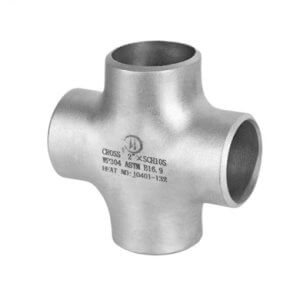
Both tees and crosses are used as connecting components for branch pipes in pipeline systems. Different models and materials can be selected according to different pipe diameters and working environments. They are usually used to connect branch pipes and have the characteristics of convenient connection, simple structure, and small flow resistance.
Commonly used models include equal diameter and variable diameter. The equal diameter model is suitable for the case where the diameters of branch pipes and main pipes are the same, while the variable diameter model is suitable for connecting pipes of different diameters. The difference between a tee and a four-way lies in the number of connected pipes. A tee connects three pipes and a four-way connects four pipes. In addition to equal-diameter and reducing-diameter models, there are many other models of tees and crosses, such as 45-degree tees, 90-degree tees, joint-type tees, pressure-reducing tees, concentric crosses, and eccentric crosses. wait. Different models of tees and four-way have different connection methods, angles, flow control, etc., and can be selected according to actual needs.
In terms of materials, tees and crosses can be made of different materials, such as carbon steel, stainless steel, cast iron, brass, copper-nickel alloy, etc. Different materials have different chemical properties and physical properties, and the appropriate material can be selected according to the specific application environment. In addition, there are different surface treatments for tees and crosses, such as spray painting, hot-dip galvanizing, electro-galvanizing, shot blasting, etc., which can improve their corrosion resistance and aesthetics.
Contact
- Tel:+86 317 6019016
- Contact person:Mr. Dai
- Wechat:13102449099
- Mobile:+86 1310 244 9099
- E-mail:18713768122@163.com


